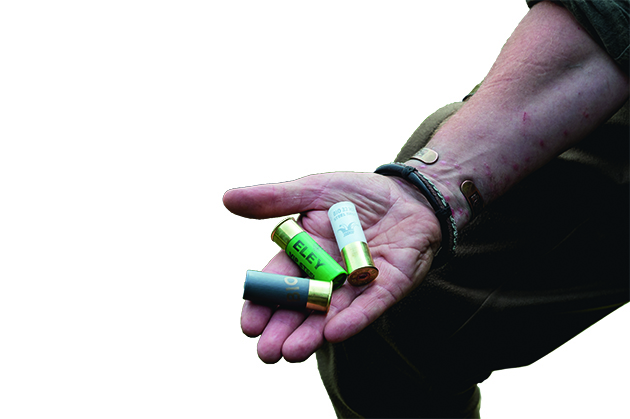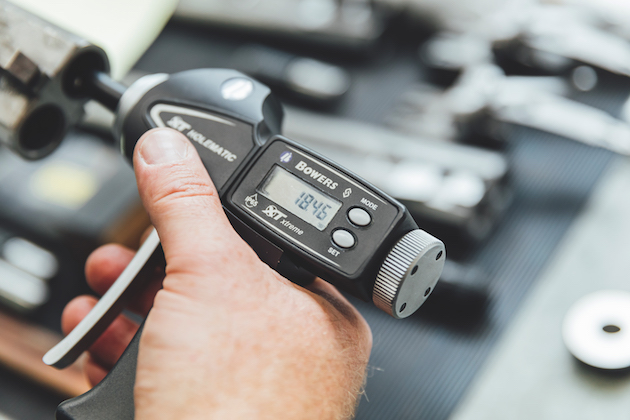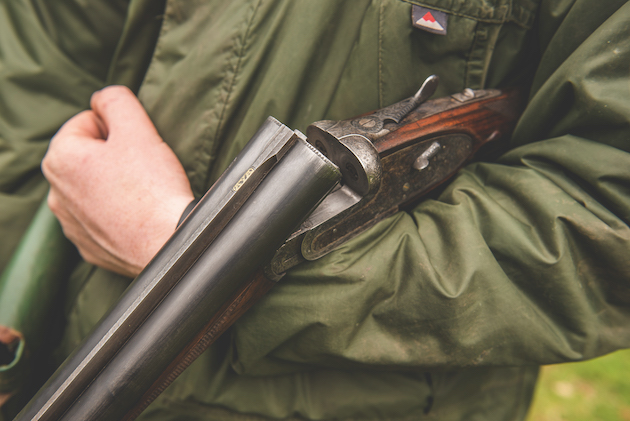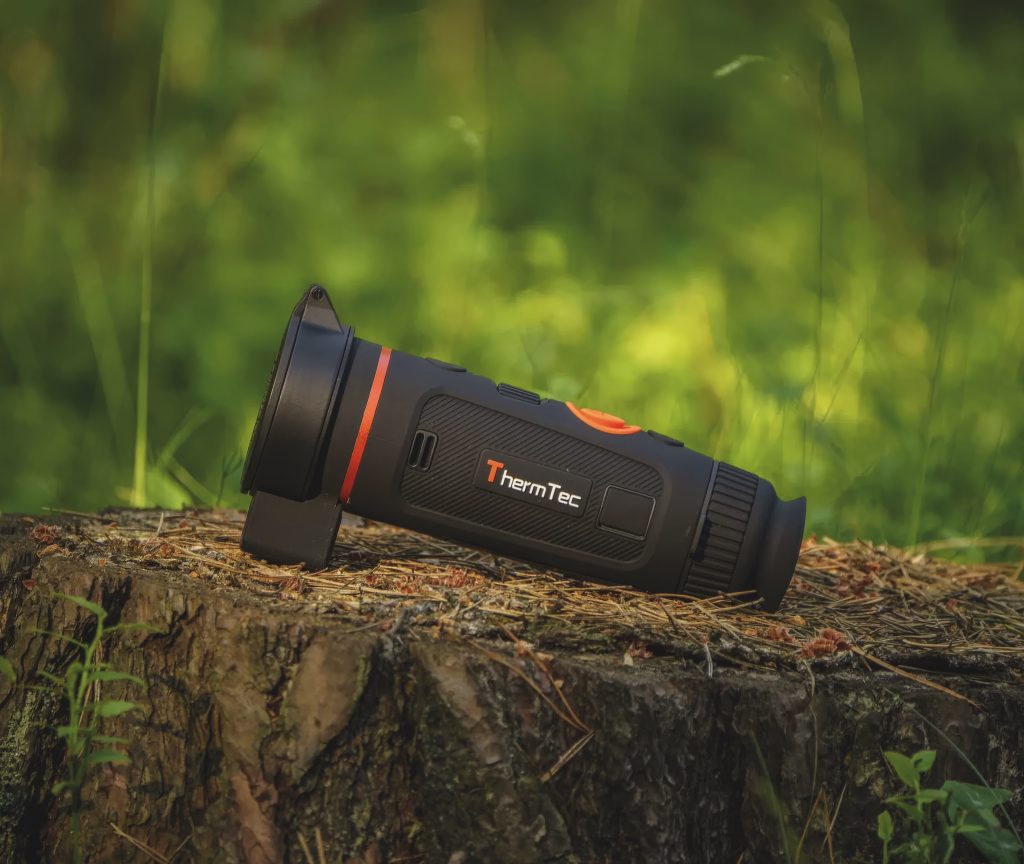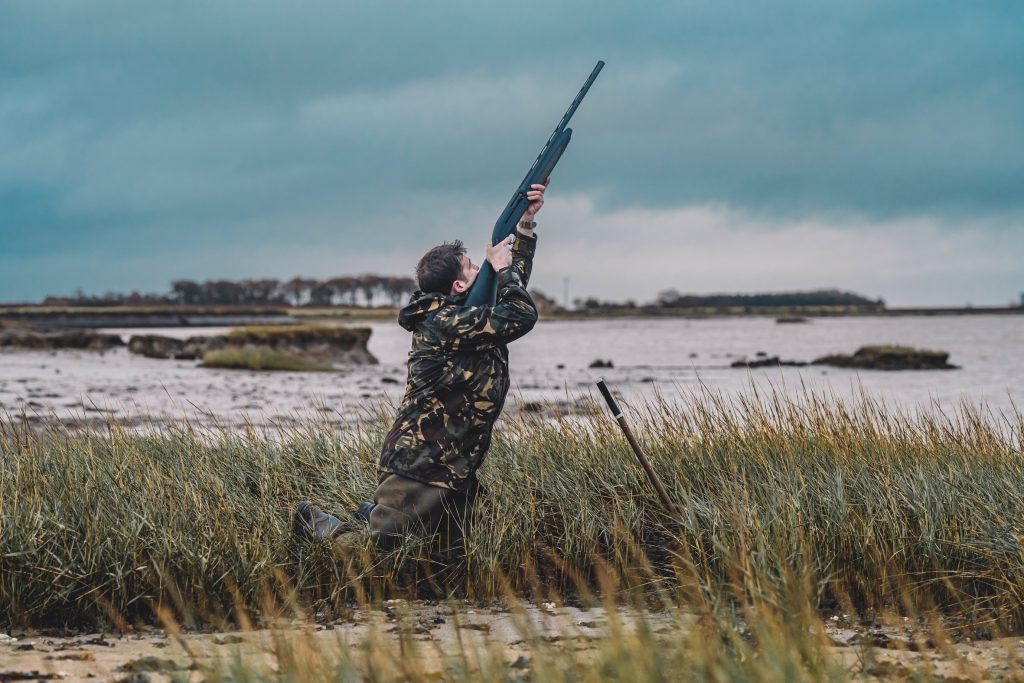Win CENS ProFlex DX5 earplugs worth £1,149 – enter here
What are the choices available if you’re looking for lead-free ammunition?
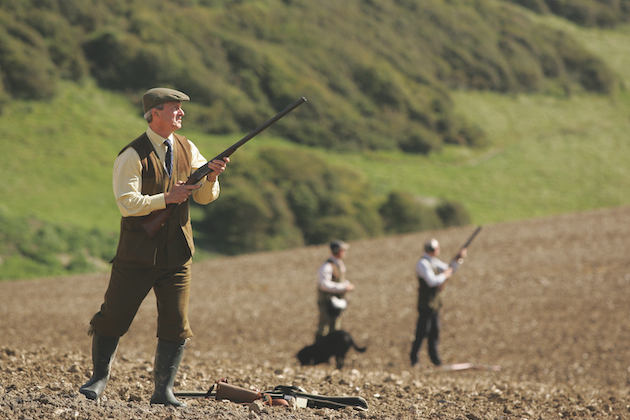 William Spurgin on the third drive
William Spurgin on the third drive
Like many people, you may be considering trying some steel shot for your game shooting this season. But with so much misinformation available online, how do you know where to start?
Moving towards lead free ammunition
We must begin by realising that what is right for somebody on Facebook may not be right for us. In addition, the range of biodegradable steel shot cartridges on offer is growing every month, so we could be forgiven for feeling confused and uncertain.
To narrow down the increasing range of options, we must take into account two factors — our chosen quarry and our chosen gun. The significant measurements of chamber length and choke on our chosen gun will cross off some of the cartridge choices and, though that might be restrictive, it also helps to make the decision easier when choosing lead free ammunition.
We must also be aware that steel shot itself falls into one of two categories: standard steel and high-performance steel. Standard steel can go through any nitro-proof barrel in good condition — the Proof House also says that pre-1954 proof marks should be submitted for nitro re-proofing — and no one has set a lower threshold for barrel wall thickness for nitro-proof guns.
The other factor to be aware of is the current guidance from the British Proof Authorities calls for half-choke or less for use of any standard steel cartridge. It is important to say at the outset that, if you are in any doubt about any of these measurements, you should have them assessed by a competent gunsmith with a professional wall thickness gauge, bore gauge and chamber gauge. For peace of mind, it is worth doing it anyway even if you think you know. Holts Auctioneers offers this service free of charge.
High-performance steel can only go through barrels stamped with the fleur-de-lis symbol.
Eley VIP Steel, BioAmmo and Shooting Star cartridges are among those on offer.
English side-by-sides
The majority of English side-by-sides will have chambers that measure 2½in (65mm). There are some exceptions to this as some guns have had their chambers lengthened to 2¾in (70mm) and some were made 3in chambers (76mm). In the current market, you will be limited to one choice: Eley Grand Prix Traditional Steel 30g No 4 (2.9mm) with a biodegradable wad. These cartridges are about to hit the shelves.
All shotgun cartridges need to balance between the penetrative size of larger shot and good patterns of smaller shot. Though I have yet to test them, the 2.9mm shot size may be a sweet spot between these two variables for reasonable game at a reasonable distance.
High pheasants
The other factor to be aware of is the current guidance from the British Proof Authorities calls for half-choke or less for use of any standard steel cartridge. These 2.9mm shells are likely to be fine for most game shooting. Few people who regularly shoot higher pheasants and partridges use side-by-sides these days, and these cartridges may not be up to the task of
a January cock pheasant coming off
a West Country escarpment. I would be looking to use a high-performance steel load and a larger shot size in this situation.
So far so straightforward. There is only one product and, to begin with, it will be offered in one shot size only.
As you will notice, chamber length and shot sizes will be given both in inches and in millimetres. This is because, infuriatingly, different manufacturers in different countries measure steel shot sizes differently. Eley’s size 4 is not the same as Gamebore’s size 4, but a millimetre is a millimetre, no matter who you talk to.
I believe that millimetres should be mandatory on all cartridge packaging because, as we shall see later with bigger shot, there is a safety aspect to be considered. Size does matter.
Modern side-by-sides and over-and-unders over about 10 years old
These guns are not likely to be proofed for high-performance steel — though there are exceptions — and may have chambers either 2¾in (70mm) or 3in (76mm) but we will focus on 2¾in.
For users of these guns, the options expand. For specialist days after snipe, woodcock and perhaps for teal on a flightpond, Eley’s Eco Wad 28g No 7 (70mm) will fit the bill nicely. For grouse, partridge and as a good all-rounder for most pheasants, Gamebore’s Dark Storm Precision Steel with the new Bio-Wad and Quad Seal in a 32g No 5 (3mm) or 4 (3.25mm) will almost certainly do everything you want it to. Again, these are very new to the market and may not be available everywhere to begin with.
Effective
Other lead free ammunition options to consider are BioAmmo with its 30g No 5 (2.9mm) which I have found to be effective on pigeon, and Jocker’s cardboard tube-style wad, in 32g Nos 4 (3.1mm) and 5 (2.9mm).
Modern over-and-unders and side-by-sides proofed for high-performance steel
These guns will be the most versatile because of the wider choice available in the current market. However, we are yet to see ‘bio-wads’ in the kind of HP steel cartridges that have been proved to be capable of killing duck and geese at range on the foreshore.
Having said that, some of the new offerings qualify as HP steel by the fact that their shot size is over 3.25mm — this is why size in millimetres matters. BioAmmo 32g No 3 (3.5mm) currently falls into this category. While they would undoubtedly be effective for mallard and pheasants — given their larger shot size — the importer tells me they will be made with 3.25mm shot in the future.
The other cartridge that falls into this category is Gamebore’s Precision Steel in 32g No 3 (3.5mm). Again, for a mixed day of pheasant and duck through quarter- or half-choke, this is likely to be effective.
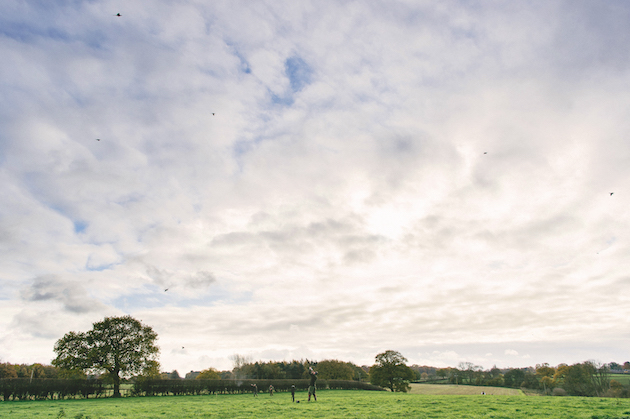
All Guns must go in with an open mind and a willingness to try different products to find the right cartridge
Learning
Some might think that fractions of a millimetre in shot size cannot make any real difference to performance, but as a community we are having to learn anew about steel shot. The old knowledge of lead shot and what works is of little use to us — steel shot behaves very differently. As with much in life, it is about finding the correct balance for our own style of shooting. If we are on a specialist day, the choice it seems is a little easier.
One of the challenges we face is that we are very often presented with a mixed day of pheasants and partridges, sometimes with some wildfowl mixed in. In this situation, a compromise is called for and it may be that our own choices out in the field, when making the selection of which birds to shoot and which to leave, have to be adjusted as a result. If we go large and shoot 3.25mm to 3.5mm, we might be effective against good-distance pheasants but far less effective at partridges at a similar range.
If we compromise and choose 3mm to 3.25mm, we will have to exercise some self-restraint when faced with a climbing cock pheasant that used to be on the limit of our range when we shot lead.
The importer of Jocker cartridges tells me that cartridges with a mix of shot sizes are in production and only time will tell if that compromise is effective.
When we eventually see the 34g and 36g loads with 3.65mm to 4mm (Nos 2 and 1) with biodegradable wads, all but the most specialised forms of game shooting will be catered for.
The exception to that will be the smaller bore shooters. Much of what can be applied to 65mm 12-bore loads currently offered in No 4 (2.9mm) should apply to 16-bore fans like me. However, I fear that we will be the last to be catered for over the transition period, given we are considered only a small subset of game shooting.
Experiment with lead free ammunition
Given the differences in steel shot sizes, we must be cautious of taking what works for others as gospel truth for our style of shooting. Our own experimentation and build-up of experience will be far more instructive than the received wisdom of the internet.
If we go in with an open mind and a willingness to try different lead free ammunition products we may find that the path to confidence in a cartridge we trust is a shorter one.
Simon Reinhold is head of operations for Holts Auctioneers and a specialist game shooting coach.
Related Articles
Get the latest news delivered direct to your door
Subscribe to Shooting Times & Country
Discover the ultimate companion for field sports enthusiasts with Shooting Times & Country Magazine, the UK’s leading weekly publication that has been at the forefront of shooting culture since 1882. Subscribers gain access to expert tips, comprehensive gear reviews, seasonal advice and a vibrant community of like-minded shooters.
Save on shop price when you subscribe with weekly issues featuring in-depth articles on gundog training, exclusive member offers and access to the digital back issue library. A Shooting Times & Country subscription is more than a magazine, don’t just read about the countryside; immerse yourself in its most authoritative and engaging publication.






